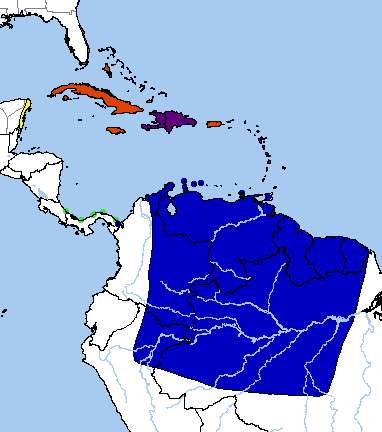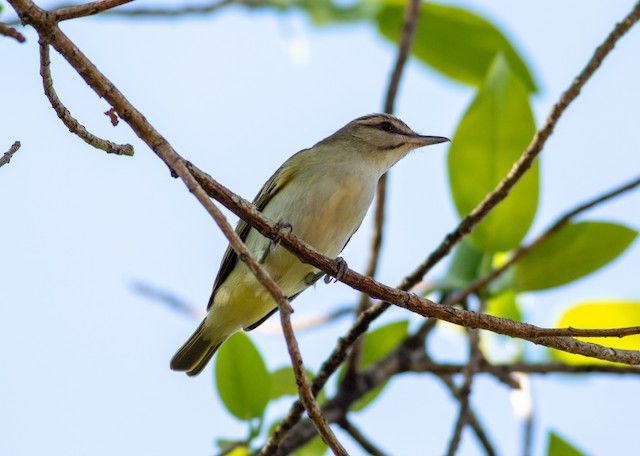
Birdfinding.info ⇒ Common throughout the West Indies during the breeding season: roughly March to July across the region. On many islands—such as Jamaica, Hispaniola, and Puerto Rico—its song is among the commonest woodland sounds during this period. In Florida, it is most easily found from Key Biscayne to Key West and in Everglades National Park. Rarely recorded on its South American wintering grounds.
Black-whiskered Vireo
Vireo altiloquus
A mostly Caribbean species that breeds in Florida and the West Indies. Winters in northern South America and the southern West Indies.
Breeding. Breeds in coastal Florida (north to Tampa Bay and Cape Canaveral) and on every major island in the Greater and Lesser Antilles, except Grand Cayman, as well as Isla Providencia, San Andrés, the ABC Islands, and some Venezuelan islands (Los Roques, Isla Margarita, possibly others). Across most of its breeding range, it occurs in almost every kind of wooded habitat, but in Florida it is mostly limited to mangroves.
Nonbreeding. Winters primarily in northern South America from eastern Panama east to the Guianas and south through western and central Amazonia to Mato Grosso. Small numbers remain year-round in breeding areas north to Hispaniola and Puerto Rico.
Movements. Northbound migration begins in January or February. Regular spring vagrant on the Yucatán Peninsula and the U.S. Gulf Coast in April and May. Exceptional records of spring overshoots along the Eastern Seaboard north to Rhode Island and on Bermuda. Southbound migration is mainly during August and September, when it regularly appears along the Caribbean coast of Central America.
Identification
Looks like a Red-eyed or Chivi Vireo with a whisker stripe, longer bill, and reddish-brown eye. As in those species, has a pale eyebrow framed above and below by a blackish eyeline and border on the edge of the crown.
The diagnostic whisker stripe can be either bold or indistinct, and immatures may lack the whisker stripe altogether. Those without distinct whisker stripes can be essentially identical to closely related species.
Plumage coloration varies considerably. Most often has predominantly olive upperparts and whitish underparts, with a grayish crown and a yellowish wash on the sides of the chest and the vent.
Upperparts can vary from dull brownish to bright olive, and underparts vary from clean white to buffy. The face can be whitish, olive, or buffy.
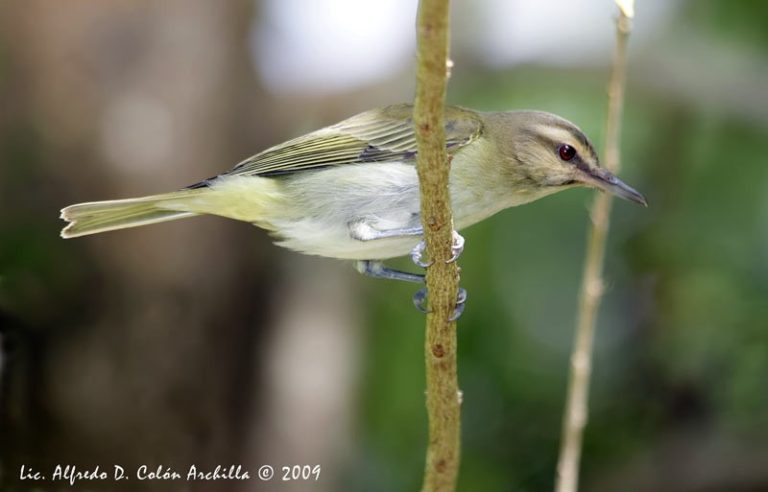
Black-whiskered Vireo. (El Yunque National Forest, Puerto Rico; March 20, 2009.) © Alfredo Colón
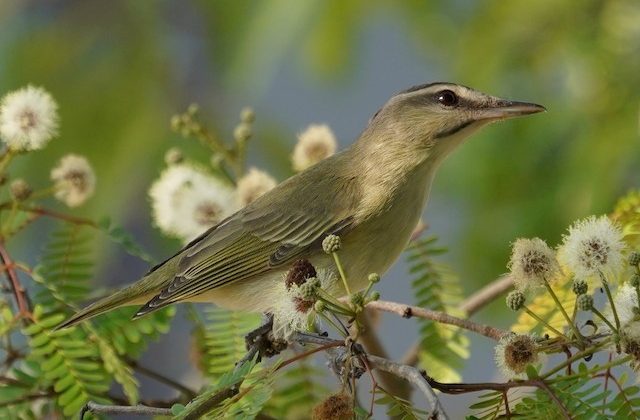
Black-whiskered Vireo, with a bold whisker mark. (Big Cypress National Preserve, Florida; April 21, 2018.) © Teri Zambon True
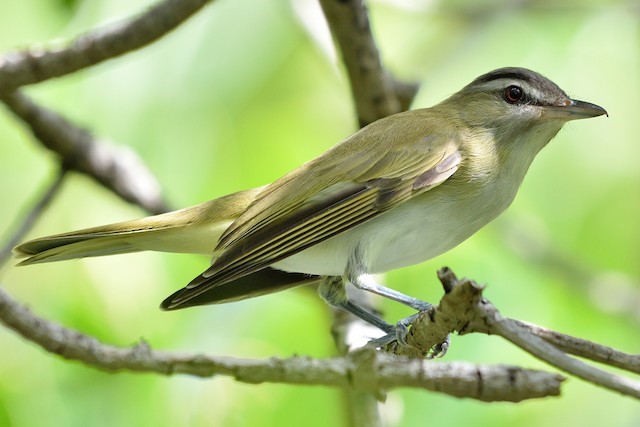
Black-whiskered Vireo, with a well-defined eyeline and eybrow but indistinct whisker stripe, very similar to Red-eyed Vireo. (Spaans Lagoon, Aruba; February 26, 2017.) © Michiel Oversteegen
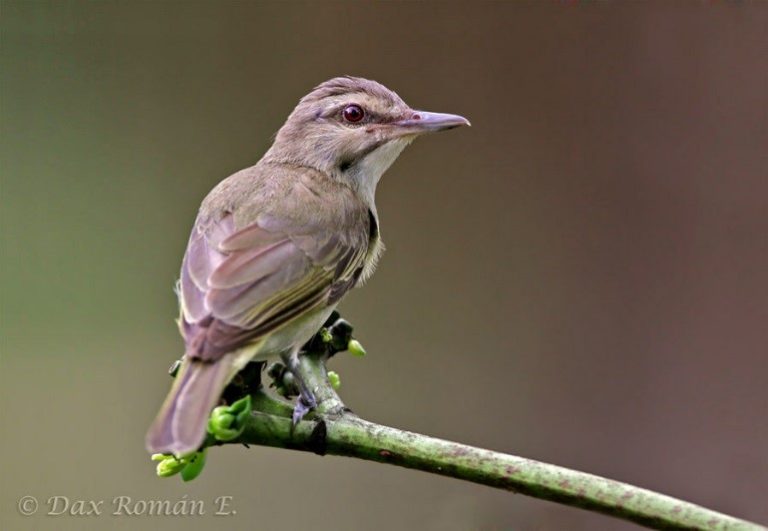
Black-whiskered Vireo, showing mostly brownish upperparts, including the face. (Dominican Republic; April 24, 2012.) © Dax M. Román E.
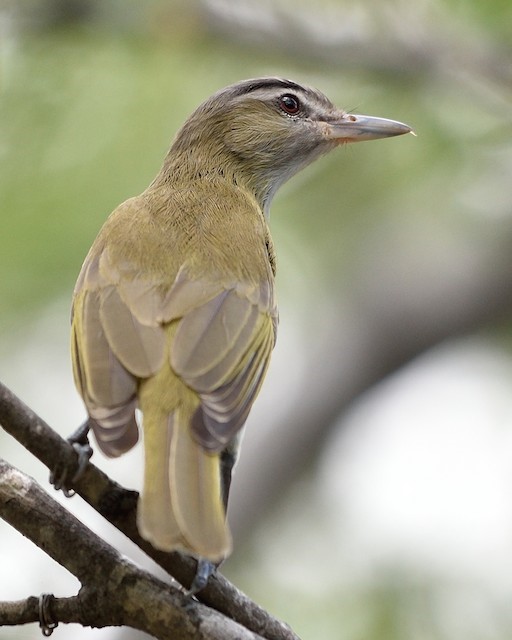
Black-whiskered Vireo, showing mostly olive upperparts, including the face. (Spaans Lagoon, Aruba; February 26, 2017.) © Michiel Oversteegen
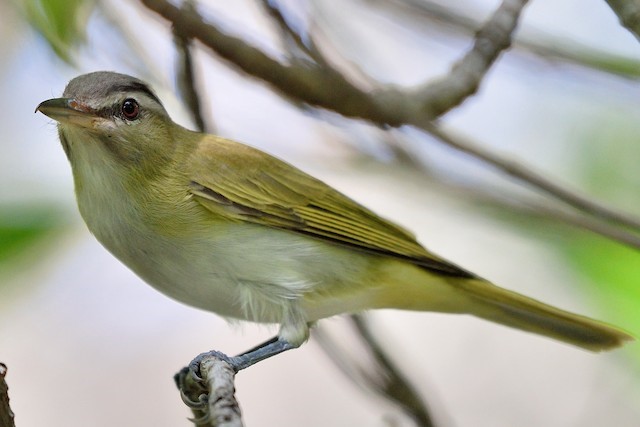
Black-whiskered Vireo, showing typical yellowish wash on the sides of the chest and the vent. (Spaans Lagoon, Aruba; February 26, 2017.) © Michiel Oversteegen
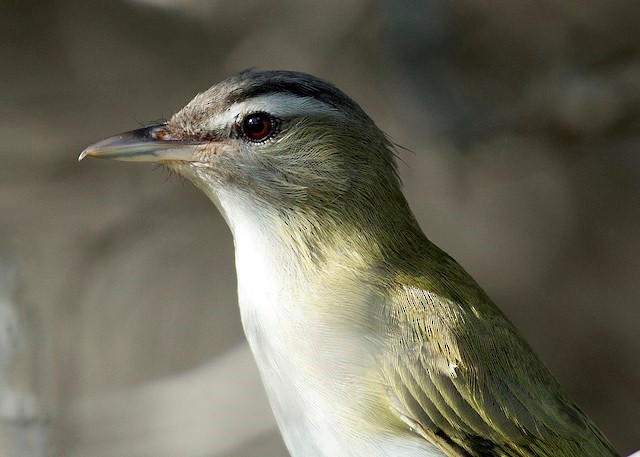
Black-whiskered Vireo, with very indistinct whisker stripe—note the brownish eye. (Spaans Lagoon, Aruba; February 19, 2017.) © Gregory Peterson
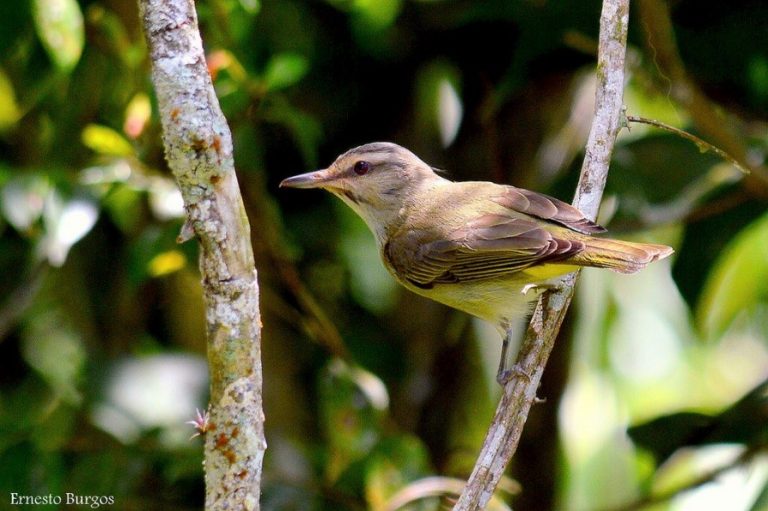
Black-whiskered Vireo. (Cabo Rojo National Wildlife Refuge, Puerto Rico; April 29, 2014.) © Ernesto Burgos
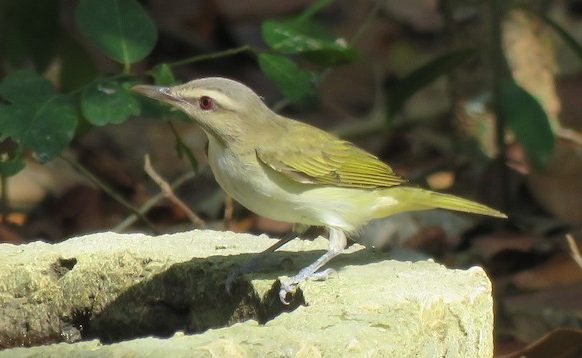
Black-whiskered Vireo, an unusually bright olive individual with indistinct facial markings. (Cueva del Jabali, Cayo Coco, Cuba; April 7, 2017.) © Thomas Hinnebusch
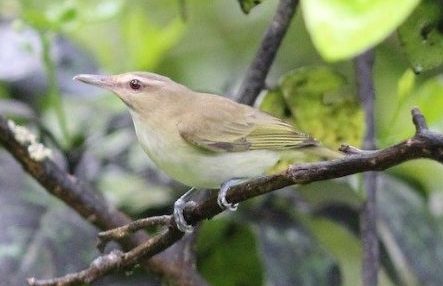
Black-whiskered Vireo, buffy overall, with unusually indistinct facial markings. (El Yunque National Forest, Puerto Rico; March 22, 2012.) © Alan Selin

Black-whiskered Vireo, with buffy face. (Paraíso Caño Hondo, Dominican Republic; November 5, 2016.) © Patrick V.
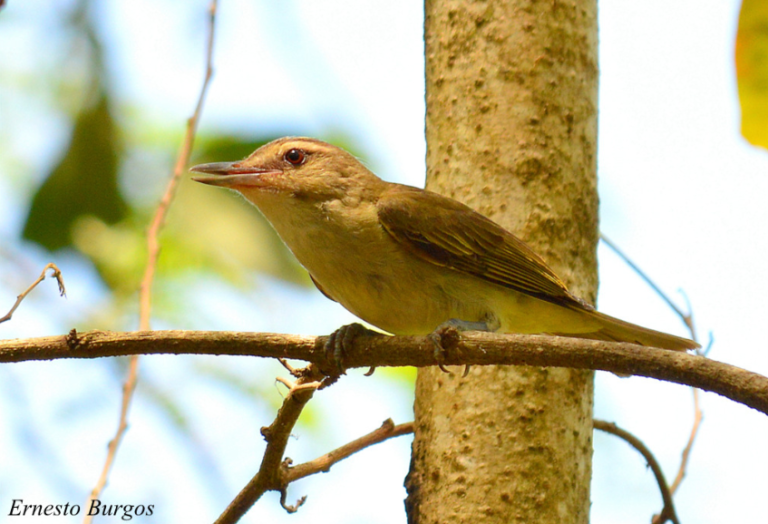
Black-whiskered Vireo, likely immature. (Cabo Rojo National Wildlife Refuge, Puerto Rico; June 22, 2013.) © Ernesto Burgos
Notes
Polytypic species consisting of six recognized subspecies.
Florida Breeding Bird Survey Map: Black-whiskered Vireo.
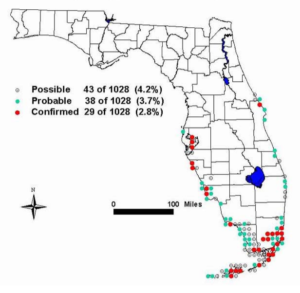
References
Alderfer, J., and J.L. Dunn. 2014. National Geographic Complete Birds of North America (Second Edition). National Geographic Society, Washington, D.C.
Ascanio, D., G.A. Rodriguez, and R. Restall. 2017. Birds of Venezuela. Christopher Helm, London.
Brewer, D. 2018. Black-whiskered Vireo (Vireo altiloquus). In Handbook of the Birds of the World Alive (J. del Hoyo, A. Elliott, J. Sargatal, D.A. Christie and E. de Juana, eds.). Lynx Edicions, Barcelona. https://www.hbw.com/node/61269. (Accessed August 5, 2018.)
eBird. 2019. eBird: An online database of bird distribution and abundance. Cornell Lab of Ornithology, Ithaca, N.Y. http://www.ebird.org. (Accessed January 30, 2019.)
Fagan, J., and O. Komar. 2016. Peterson Field Guide to the Birds of Northern Central America. Houghton Mifflin Harcourt, New York.
ffrench, R. 2012. A Guide to the Birds of Trinidad & Tobago (Third Edition). Cornell University Press, Ithaca, N.Y.
Garrido, O.H, and A. Kirkconnell. 2000. Field Guide to the Birds of Cuba. Cornell University Press, Ithaca, N.Y.
Haynes-Sutton, A., A. Downer, R. Sutton, and Y.-J. Rey-Millet. 2009. A Photographic Guide to the Birds of Jamaica. Princeton University Press, Princeton, N.J.
Latta, S., C. Rimmer, A. Keith, J. Wiley, H. Raffaele, K. McFarland, and E. Fernandez. 2006. Birds of the Dominican Republic and Haiti. Princeton University Press, Princeton, N.J.
McMullan, M., and T. Donegan. 2014, Field Guide to the Birds of Colombia (Second Edition). Fundación Proaves de Colombia, Bogotá.
Raffaele, H. 1989. A Guide to the Birds of Puerto Rico and the Virgin Islands. Princeton University Press, Princeton, N.J.
Raffaele, H., J. Wiley, O. Garrido, A. Keith, and J. Raffaele. 1998. A Guide to the Birds of the West Indies. Princeton University Press, Princeton, N.J.
Ridgely, R.S., and J.A. Gwynne. 1989. A Guide to the Birds of Panama (Second Edition). Princeton University Press, Princeton, N.J.
Ridgely, R.S., and G. Tudor. 1989. The Birds of South America, Volume I: The Oscine Passerines. University of Texas Press, Austin.
Wells, J.V., and A.C. Wells. 2017. Birds of Aruba, Bonaire, and Curaçao. Cornell University Press, Ithaca, N.Y.
Wikiaves, Juruviara-barbuda, https://www.wikiaves.com.br/juruviara-barbuda.
